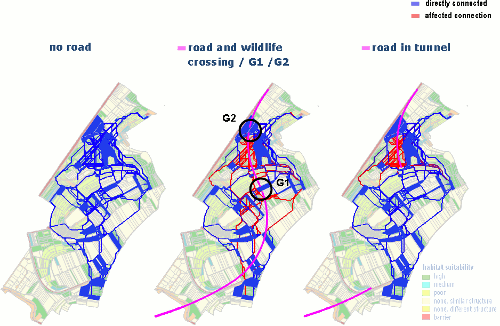Efficiency of re-connecting habitat networks for invertebrate populations
Project management: Dr. Reinhard Klenke
Staff responsible: Dr. Reinhard Klenke
Funded by: BfN - Federal Agency for Nature Conservation (FKZ 3508 82 0900)
Project duration: 01. February 2008 - 15. November 2010
Cooperation partners: Institute of Landscape Planning and Ecology (ILPE), University of Stuttgart
The assessment and mitigation of biological effects caused by landscape fragmentation and sub-dissection by planned highways, roads and railroads is an integrated and obligatory part of EU impact assessment as well as of German landscape planning procedures. Measures to re-establish habitat networks like the integration of wildlife crossings are increasingly accepted. However, in the past research has been mainly focussed on the reduction of sub-dissection effects for mobile vertebrate species. In contrast, the effects of measures improving habitat connectivity for wingless and slow moving invertebrates and especially on their population viability are not well understood.
In this project we use two approaches to assess the efficiency of different measures for improving connectivity for slow moving invertebrates. Both approaches are applied in the same areas of study placed in various landscapes of Germany.
In a `scientific approach` habitat suitability is modeled using multifactorial statistical habitat models. The permeability of the landscape matrix is analysed by least cost path methods. In an `applied landscape planning approach` habitat suitability is assessed by expert knowledge using typical planning-data like mapped vegetation units. The species dispersal is modeled using an individual-based movement model.
In both approaches metapopulation analyses are applied to assess population viability. Different scenarios of re-connecting habitats after a dissection by traffic infrastructure are analysed like integrating wildlife crossings (one large vs. several small), improving existing habitats and/or creating new stepping stones. To analyse the efficiency of the measures, in each scenario the feasibiliy of implementation and expected costs are also assessed.
One goal of the project is to derive `thumb-rules` for applied landscape planning on reconnecting habitat networks for invertebrates. Therefore, the research aims to derive suitable methods and the minimum of data necessary for sound analyses within planning processes.

